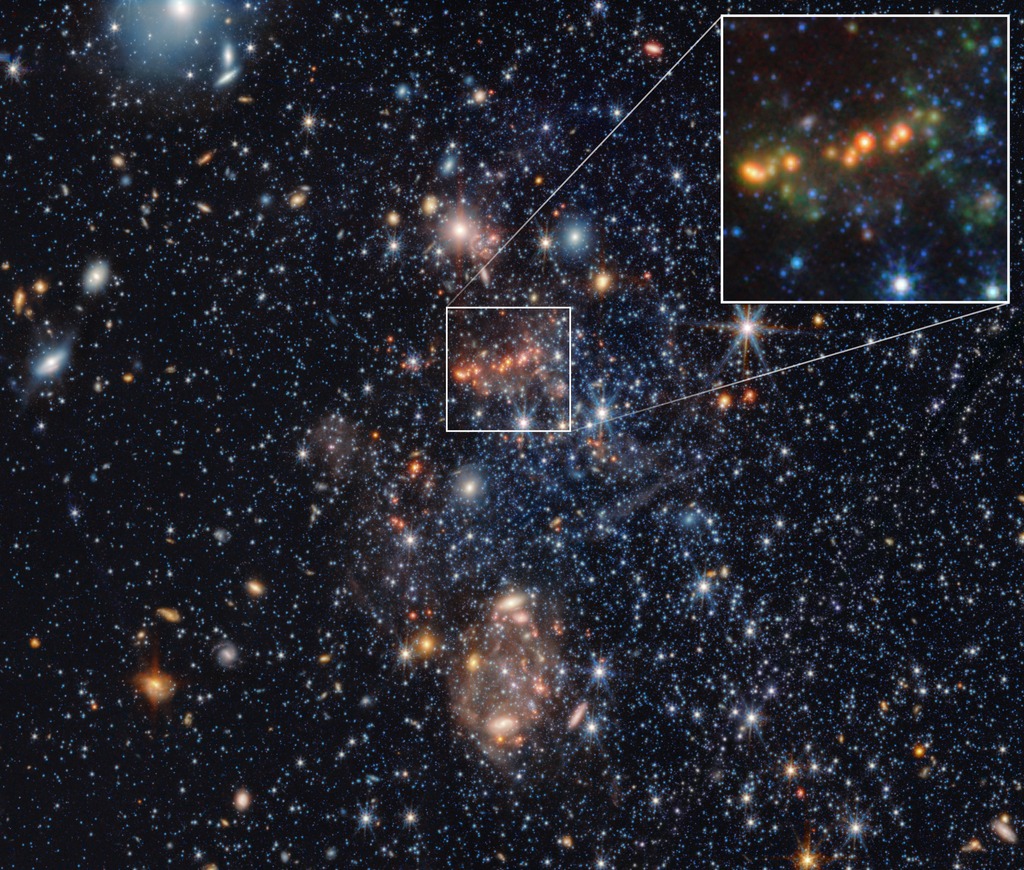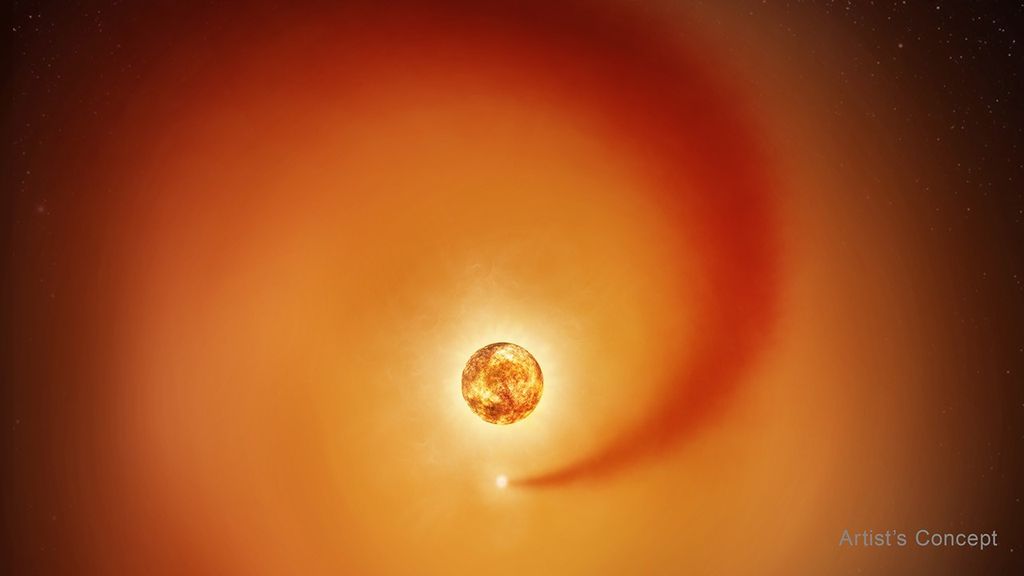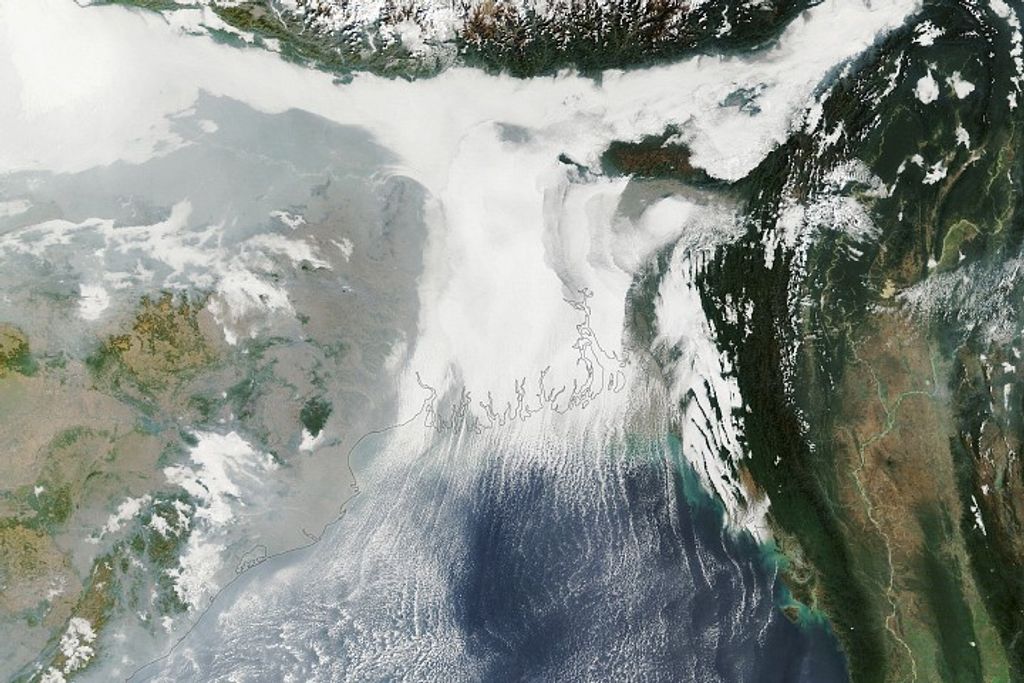1 min read
Galaxy GS-NDG-9422 (Compass NIRCam Image)
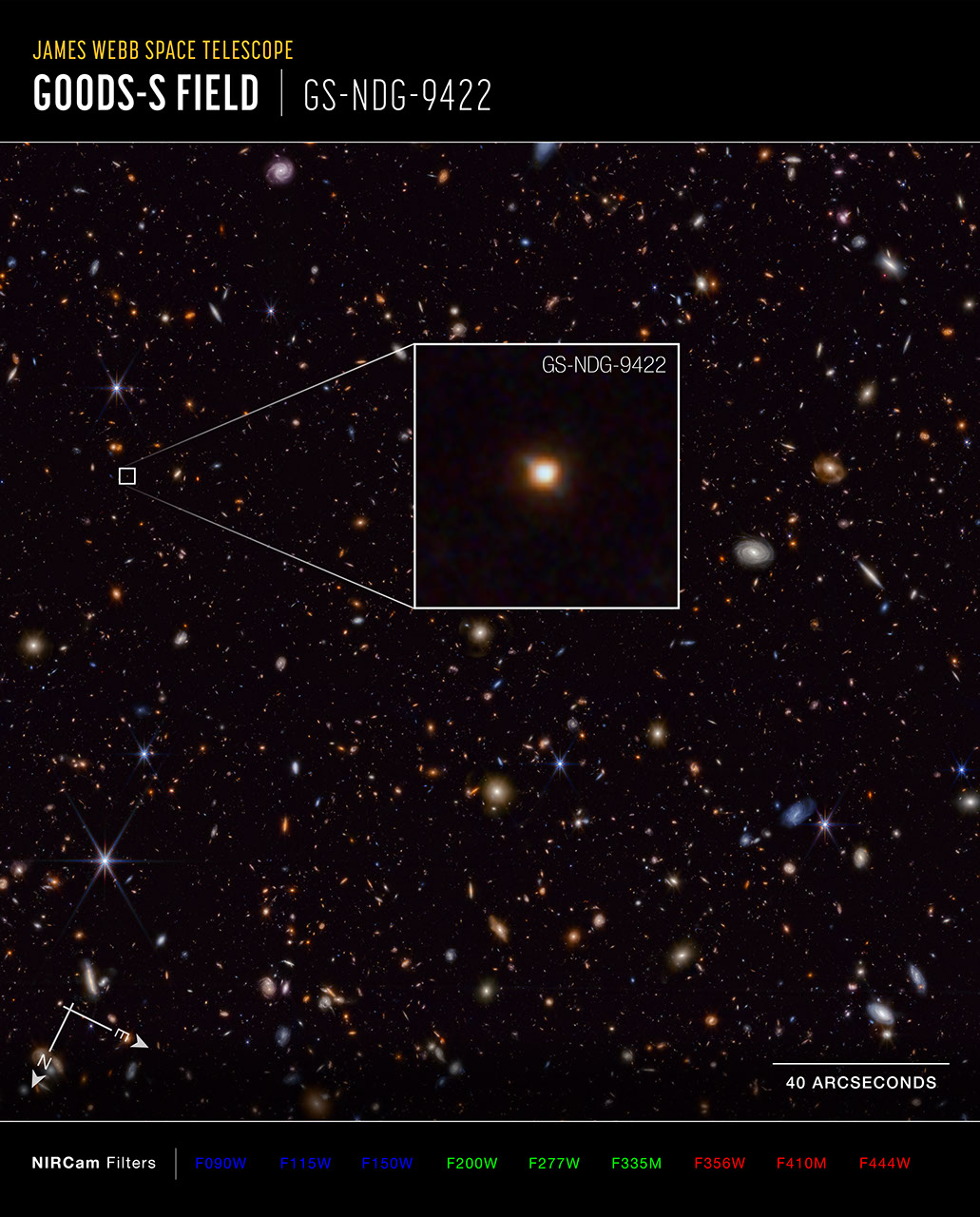
This image of galaxy GS-NDG-9422, captured by the James Webb Space Telescope’s NIRCam (Near-Infrared Camera) instrument, is presented with compass arrows, scale bar, and color key for reference.
This image shows near-infrared wavelengths of light that have been translated into visible-light colors. The color key shows which filters were used when collecting the light. The color of each filter name is the visible light color used to represent the infrared light that passes through that filter.
The north and east compass arrows show the orientation of the image on the sky. Note that the relationship between north and east on the sky (as seen from below) is flipped relative to direction arrows on a map of the ground (as seen from above).
The scale bar is labeled in arcseconds. One arcsecond is equal to 1/3600 of one degree of arc. (The full Moon has an angular diameter of about 0.5 degrees.) The actual size of an object that covers one arcsecond on the sky depends on its distance from the telescope.
Read the unannotated image caption.
About the Object
- R.A. PositionR.A. PositionRight ascension – analogous to longitude – is one component of an object's position.03:32:36.89
- Dec. PositionDec. PositionDeclination – analogous to latitude – is one component of an object's position.-27:46:49.33
- ConstellationConstellationOne of 88 recognized regions of the celestial sphere in which the object appears.Fornax
- DimensionsDimensionsThe physical size of the object or the apparent angle it subtends on the sky.Image is about 3.7 arcminutes across
About the Data
- Data DescriptionData DescriptionProposal: A description of the observations, their scientific justification, and the links to the data available in the science archive.
Science Team: The astronomers who planned the observations and analyzed the data. "PI" refers to the Principal Investigator.This image was created with Webb data from proposal: 1180 (D. Eisenstein). Image processing: Alyssa Pagan (STScI).
- InstrumentInstrumentThe science instrument used to produce the data.NIRCam
- Exposure DatesExposure DatesThe date(s) that the telescope made its observations and the total exposure time.29 Sept. - 10 Oct. 2022
- FiltersFiltersThe camera filters that were used in the science observations.F090W, F115W, F150W, F200W, F277W, F335M, F356W, F410M, F444W
- Object NameObject NameA name or catalog number that astronomers use to identify an astronomical object.GS-NDG-9422, JWST Advanced Deep Extragalactic Survey, GOODS-S
- Object DescriptionObject DescriptionThe type of astronomical object.Nebular dominated galaxy
- Release DateSeptember 25, 2024
- Science ReleaseIn Odd Galaxy, NASA’s Webb Finds Potential Missing Link to First Stars
- CreditImage: NASA, ESA, CSA, STScI, Alex Cameron (Oxford)

These images are a composite of separate exposures acquired by the James Webb Space Telescope using the NIRCam instrument. Several filters were used to sample wide wavelength ranges. The color results from assigning different hues (colors) to each monochromatic (grayscale) image associated with an individual filter. In this case, the assigned colors are: Blue: F090W + F115W + F150W Green: F200W + F277W + F335M Red: F356W + F410M + F444W
Related Images & Videos
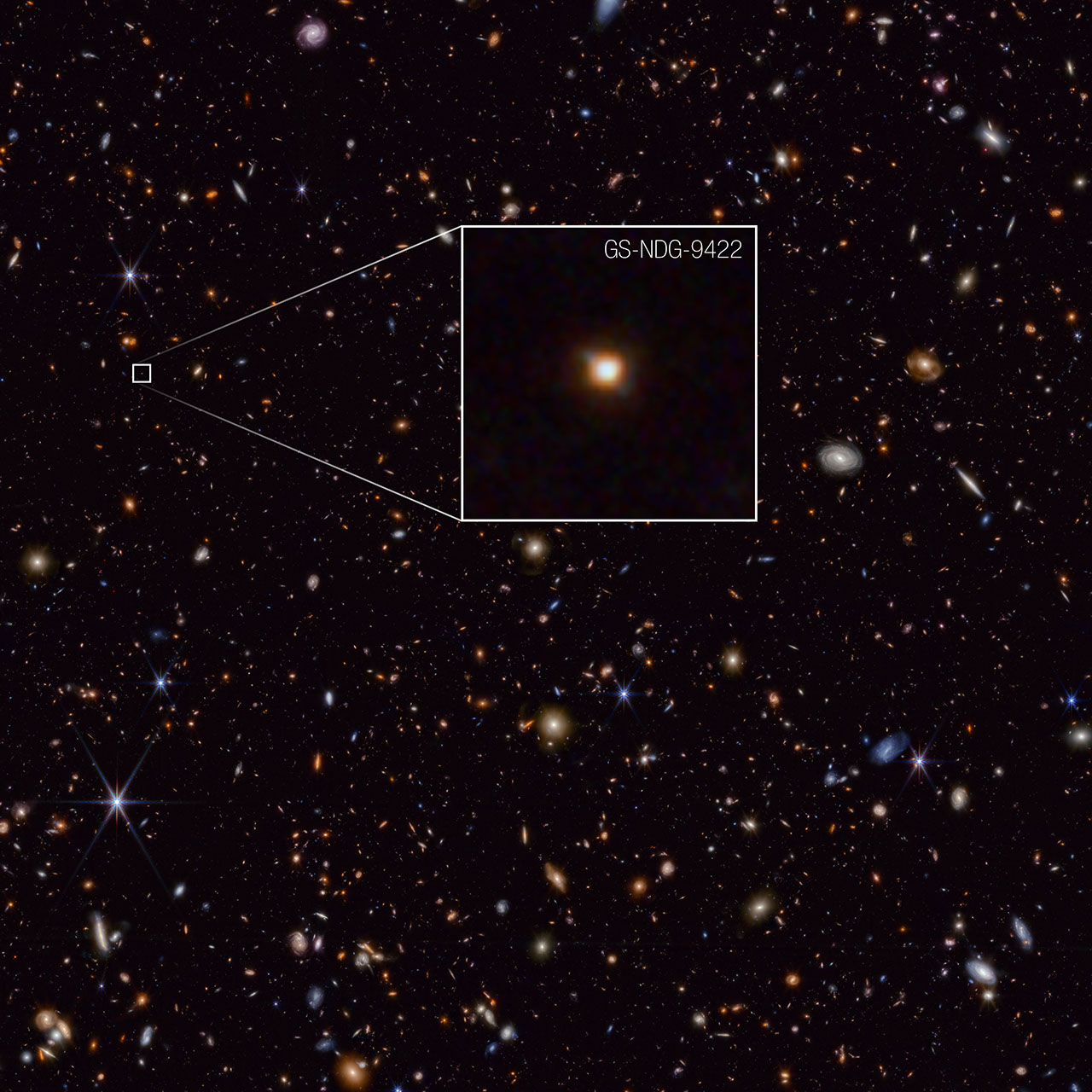
Galaxy GS-NDG-9422 (NIRCam Image)
The galaxy GS-NDG-9422 may easily have gone unnoticed. However, what appears as a faint blur in this James Webb Space Telescope NIRCam (Near-Infrared Camera) image may actually be a groundbreaking discovery that points astronomers on a new path of understanding galaxy evolution...
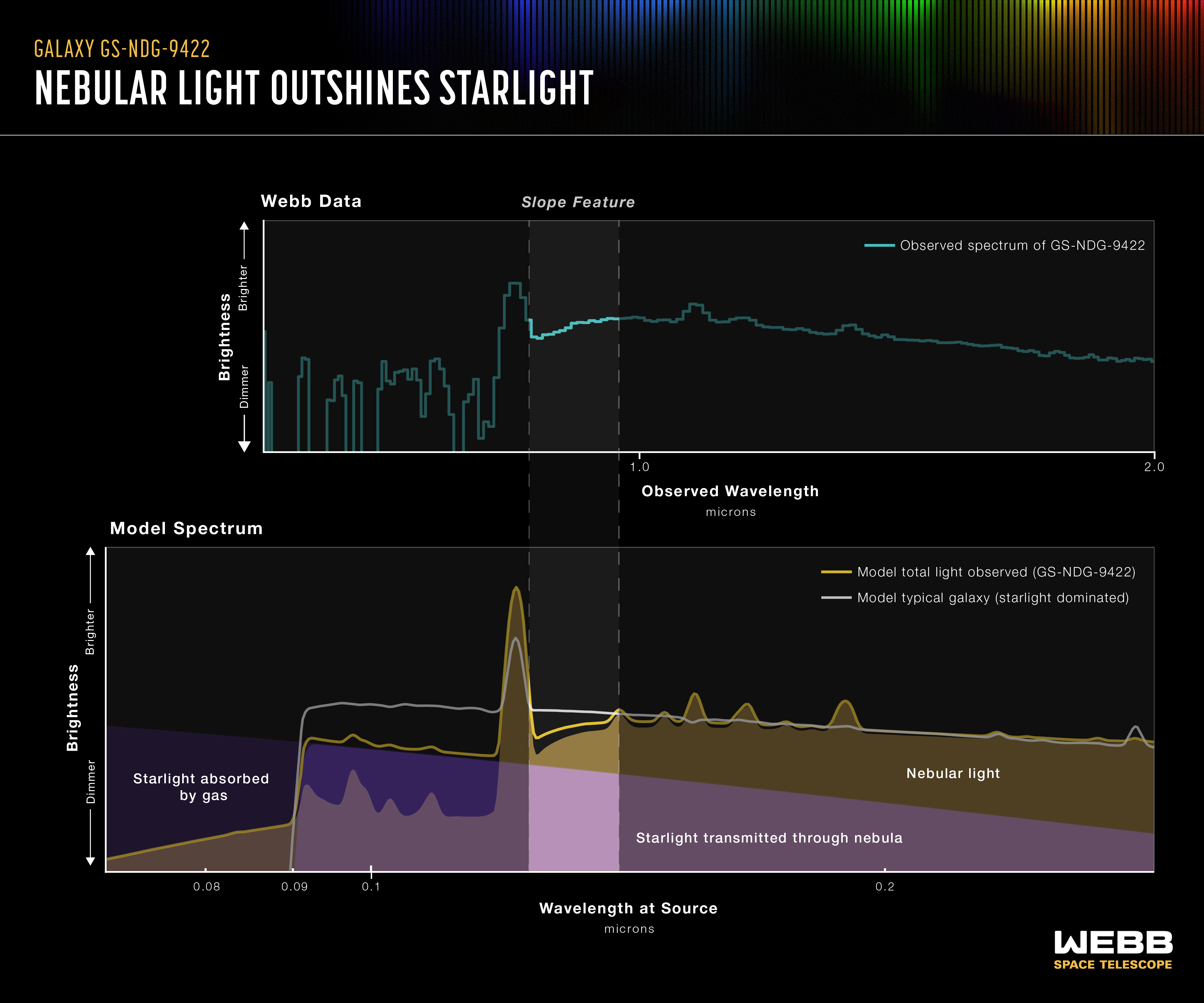
Galaxy GS-NDG-9422 Spectrum (NIRSpec)
This comparison of the data collected by the James Webb Space Telescope with a computer model prediction highlights the same sloping feature that first caught the eye of astronomer Alex Cameron, lead researcher of a new study published in Monthly Notices of the Royal...
Share
Details
Laura Betz
NASA’s Goddard Space Flight Center
Greenbelt, Maryland
laura.e.betz@nasa.gov
NASA, ESA, CSA, STScI, Alex Cameron (Oxford)

